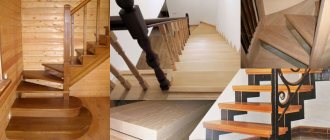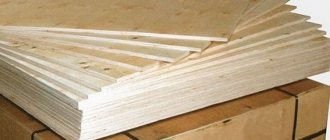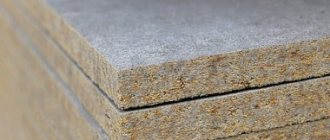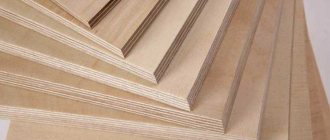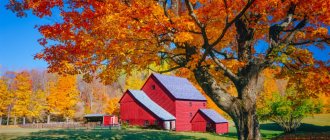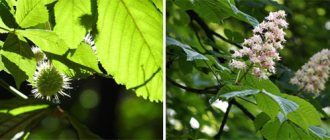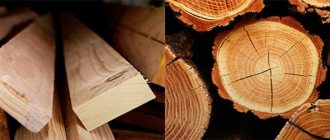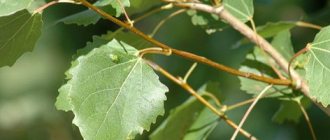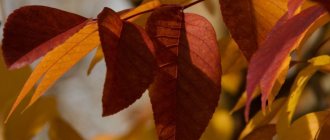- home
- Articles
- White acacia wood
White acacia (or black locust) wood is one of the valuable types of wood. The heartwood can come in a wide range of colors: brown, shades of green, yellow and grey. Acacia sapwood is lighter and has a yellow tone. The texture of the wood is clearly expressed due to the growth rings and rays. The cut surface of the wood has a slight shine with a tint of various shades. the heart-shaped rays in any section will be practically invisible. Wood has many advantages. It is one of the most durable types of wood.
Acacia wood: application
The excellent characteristics of lumber allow the widespread use of acacia and thermoacacia wood.
The tree is suitable for making:
- furniture - traditional products and models of exclusive design;
- floor coverings - parquet and regular floorboards;
- doors – interior and entrance;
- finishing materials - panels, lining.
They also prefer to buy acacia wood for the implementation of technical and industrial projects - for the production of sleepers, piles, log houses. The material is actively used in construction, including baths and saunas, since heat-treated acacia perfectly withstands changes in humidity without losing its properties and appearance.
Acacia is universal. Wood is valued for its excellent properties, is in demand and popular among craftsmen. If your goal is to create something beautiful and durable, thermal acacia is the best option for this.
Traditional medicine recipes based on acacia
To prepare medicinal products, flowers, leaves, as well as acacia pods and bark are used, from which essential oil is extracted. Acacia is used in folk medicine in the form of teas, infusions, decoctions and tinctures. Medicinal products are used for both external and internal use.
For colds and coughs, add 1 tbsp. l. 250 ml of dry petals are added. boiling water, infuse and take with honey until complete recovery.
Tea made from 1 tbsp will help with whooping cough. l. dried crushed flowers brewed in milk or water. The infused and strained drink is taken with honey.
For diseases of the oral cavity, use an infusion of 1 tbsp. l. dried flowers and a glass of boiling water. Infuse, filter and use for rinsing.
For stomatitis, prepare a remedy containing 1 tsp. acacia honey, 1 tsp. baking soda and a glass of water. Rinse with healing liquid, combining with resorption of 1 tsp. acacia honey.
For gastritis and ulcers, use a decoction of the bark: 1/2 tbsp. l. crushed raw materials are placed in a container with 1/2 liters of water and boiled over low heat for 20 minutes. Strain and consume, adding water for 2 weeks.
For stomach ulcers, a vodka tincture prepared according to the recipe will help: 2 tbsp. l. Grind the bark, pour in 0.6 l. alcohol-containing liquid. Place in a dark place to infuse, during which the contents should be shaken periodically, and strain after 10 days. Take white acacia tincture half an hour before meals, 20 drops three times a day.
For diseases of the kidneys and genitourinary system, the following recipes are used:
- Art. l. The inflorescences of the plant are combined with a glass of boiling water and left for 30 minutes. Strain and take 100 ml. after every meal.
- Art. l. flowers and 1/2 liters of water at a low boil for 3 minutes. The infused mixture is filtered and taken in small portions before meals.
Acacia flowers help in the treatment of diseases of the musculoskeletal system and skin pathologies
For external use, an acacia tincture is prepared: the container is filled with inflorescences to 1/3 of the volume, alcohol is added to the top. Seal tightly and put in a dark place to infuse, remembering to shake the contents periodically. After 2 weeks, filter and use for rubbing for rheumatism, radiculitis, varicose veins.
With tired legs and spider veins, a tincture of 100 g helps. inflorescences and half a liter of vodka. The mixture is infused in a dark place for 2-3 weeks, crushed lemon is added and infused for another 7 days. The finished tincture is filtered and used for rubbing the affected areas before bed.
Acacia flowers are used in gynecology; for inflammation and leucorrhoea, a tincture is used: 200 g. raw materials are poured with 1/2 liter of vodka, infused in a dark place for 2 weeks. Strain and take 1 tsp. (for older women and girls) and 1 tbsp. l. (for young women) half an hour before meals three times a day.
For inflammation of the ovaries, appendages and uterine fibroids, 1 tbsp. l. 200 ml of dried flowers are steamed. boiling water, leave for 15-20 minutes. The strained infusion is taken in 2 tbsp. l. three times a day half an hour before meals for 2 weeks.
A decoction of the leaves is used as an anti-inflammatory and antipyretic agent: 1 tbsp. l. dry raw materials with a glass of water are boiled over low heat for 5 minutes. Infuse, filter and drink according to Art. l. three times a day before meals.
White acacia essential oil has a calming and relaxing effect on the human nervous system
Acacia and thermoacacia - features of wood and wood
Acacia is a fast-growing tree, actively gaining growth from the first year of planting. In favorable conditions it reaches a height of more than 30 meters, a diameter of more than a meter. The tree reaches technical ripeness by 20-30 years - this time is considered optimal for starting logging.
When cutting, the structural uniqueness of acacia wood is striking - the tree has a very wide core and minimal sapwood. The kernel is distinguished by a dark color with a rich variation of shades - from greenish-yellow to dark brown. The sapwood is light golden, honey-colored. All acacia wood is characterized by a pronounced silky shade, which is most strongly revealed during the processing of the material.
With prolonged exposure to sunlight on the surface of acacia, it darkens and acquires a rich and noble shade of its original color.
The texture of acacia is often compared to ash, and they are indeed similar. But acacia invariably wins in terms of cost and characteristics, especially if it is thermal acacia.
Contraindications and side effects
The use of acacia must be agreed with the attending physician, who also sets the dosage and course of administration. Products containing the plant are not recommended during pregnancy and lactation, during acute exacerbations of diseases of the internal organs and digestion, or in case of individual intolerance. The bark contains a large amount of the substance toxalbuminrobin, which can lead to irritation of the mucous membrane. Take with caution to people with low blood pressure and low acidity of gastric juice. In case of overdose, side effects may occur in the form of abdominal pain, nausea, vomiting, and dizziness.
Traditional medicine considers various recipes for preparing medicinal products with acacia
Acacia wood: properties
Acacia has unique wood. It is harder than oak and has phenomenal wear resistance. The reason for this is the multidirectional texture, when the wood fibers are oriented towards each other. This factor complicates the mechanical processing of lumber, but guarantees the exceptional properties of the tree.
Main characteristics of acacia wood:
- high biostability - resists rot well and is not susceptible to being eaten by pests;
- excellent mechanical properties - lumber is hard, durable, tough;
- density - acacia wood exhibits values from 650 to 790 kg/cub.m.
Acacia has one drawback - possible cracking during natural drying. This feature can be easily mitigated by thermal modification of acacia. Heat treatment improves the performance of wood. The material becomes less capricious: the disadvantages disappear, and the advantages increase.
The use of acacia in cosmetology
White acacia exhibits medicinal properties in cosmetology; it is indicated for all skin types, especially effective for problematic, sensitive, dehydrated and aging skin. The plant tones, increases elasticity, regenerates, eliminates wrinkles; daily use in skin care increases its elasticity and has a rejuvenating effect.
white acacia has a beneficial effect on women's health and beauty
A mask for oily skin is prepared according to the recipe: 1 tbsp. l. mix acacia leaves with whipped egg white and 1 tsp. skim milk. Apply to face and rinse with warm water after 15-20 minutes.
Mask for dry skin: to prepare it, grind acacia flowers in the amount of 10 pieces, add tbsp. l. honey and tsp. cream. Apply to facial skin, hold for 15 minutes, rinse with warm water or green tea.
A mask for normal skin is prepared from 10 crushed flowers, 1 tbsp. l. honey and 1 tsp. sour cream. The mixed product is applied to the face, kept for 20 minutes, and washed off with a decoction of acacia inflorescences.
An anti-wrinkle mask is prepared from 10 crushed flowers, 1 tsp. sour cream and 1 tsp. wheat germ oils. The mixed product is applied to the face, left for 10-15 minutes, and washed off with warm water.
A decoction of flowers is good for washing, wrapping and rinsing hair.
Treatment of the gastrointestinal tract
Acacia is often used for stomach and duodenal ulcers. To alleviate the patient's condition, decoctions or infusions are taken from the leaves of the plant or from the bark of the shoots. In case of hyperacid gastritis, use a few drops of tincture from the bark of young acacia branches in alcohol. For similar diseases, you can use tinctures from the leaves or young shoots of pink acacia.
For heartburn, it is useful to take 15 drops of alcohol infusion from the shoots of the plant. Drops should be diluted in 50 ml of water and drunk 2 times a day.
Technological characteristics
The main technological characteristic is the workability of the material. Since both woods are hardwoods with a high impact strength, both teak and acacia are quite difficult to process. In this regard, acacia is even more difficult than teak, since in a dried state it is very difficult to process it manually, and on machines it is necessary to reduce the longitudinal feed of the tool and work at high spindle speeds, while carefully monitoring the condition of the tool, which wears out quickly and requires frequent replacement. Therefore, the production of garden furniture from acacia is a long and labor-intensive process. At the same time, acacia can be ground and polished well, acquiring high surface quality.
Teak is easier to process. It saws, mills and sands well, and is moderately polished. The surface quality of solid teak furniture is very good due to the high content of elastic and oily substances.
An important indicator is the drying of the wood. To prevent teak from warping or cracking in the future, it must be properly dried. The ideal option is natural drying for 2 years. In the case of chamber or oven drying, teak must first be ringed (that is, the bark 1.5-2 cm thick is removed from a living tree in a continuous ring), after which it dies and can be dried using artificial methods.
Acacia is steamed for 5 days before drying. After which the wood is dried naturally (5-6 weeks) or in special chambers.
Both acacia and teak bend, glue and varnish quite well.
A little history
This tree was brought to Europe from North America in the early 17th century. Acacia immediately became the favorite of all gardeners. The name quickly caught on among the people, but in botanical gardens it is not called that way. There is a flower growing there called “acacia”, which people are accustomed to recognizing by the name “mimosa”. But the well-known White Acacia is called “Robinia” or “Robinia pseudoacacia”.
The history of the plant's name is connected with a French florist who received the seeds from Canada. He was the first to plant them on Parisian soil, thereby perpetuating his name. The gardener's name was Jean Robin.
At first, the tree was underestimated, being used only for aesthetic purposes. In the 19th century, wood was appreciated by shipbuilders, because it was quite hard, moisture-resistant, and did not rot. Even to create the first tracks for steam locomotives, the Americans used sleepers made from the trunk of Robinia.
Treatment of diseases of the urinary system
Traditional medicine offers many recipes that can help cure diseases of the urinary system. Acacia flowers are often used in recipes. Their medicinal properties are used in the treatment of acute or chronic cystitis. To increase the healing effect in preparing the decoction, not only acacia inflorescences are used, but also wheatgrass and calendula roots. The decoction is prepared as follows: 50 g of the collection is poured into 1.5 cups of water, brought to a boil and kept on low heat for about 8 minutes. After an hour of infusion, the decoction can be taken. Recommended dose: 50 ml three times a day. Tea from the inflorescences serves as an excellent diuretic.
For urolithiasis, use a decoction of pink acacia inflorescences.
Some practical advice
In medicine, half-blooming flowers are used, which are collected in the morning or evening. To prepare a water infusion of Robinia, you need 2 tablespoons of fresh or 1 tbsp. pour a spoonful of dried flowers into half a liter of boiling water and let it brew for 5-6 hours. Used for internal and external treatment.
If your stomach is bothering you, then you need to take 70-100 ml of warm infusion and drink it 20 minutes before meals. After a day, colic and pain in the abdominal area will become less pronounced, heartburn will go away
For ulcers and gastritis, it is necessary to continue treatment for at least six months. If you are concerned about increased acidity – 3-5 days.
For long-term storage, leave the infusion in the refrigerator, but no more than 3 weeks. The beneficial properties are undeniable, but you need to remember about contraindications.
Performance characteristics
Since we are talking about garden furniture, it is important how the material is preserved under conditions of temperature changes, under the influence of the sun, high air humidity, and precipitation.
Teak is a type of wood that is used for shipbuilding. That is, even with constant exposure to water, it does not rot. Withstands significant temperature changes.
Almost the same can be said about acacia. Properly dried, high-quality wood does not crack or warp. Acacia does not rot or become moldy when exposed to moisture, so it is quite suitable for outdoor use. It tolerates winter frosts well. Wooden gazebos are built from it and furniture is made that is not brought into the house when cold weather sets in.
